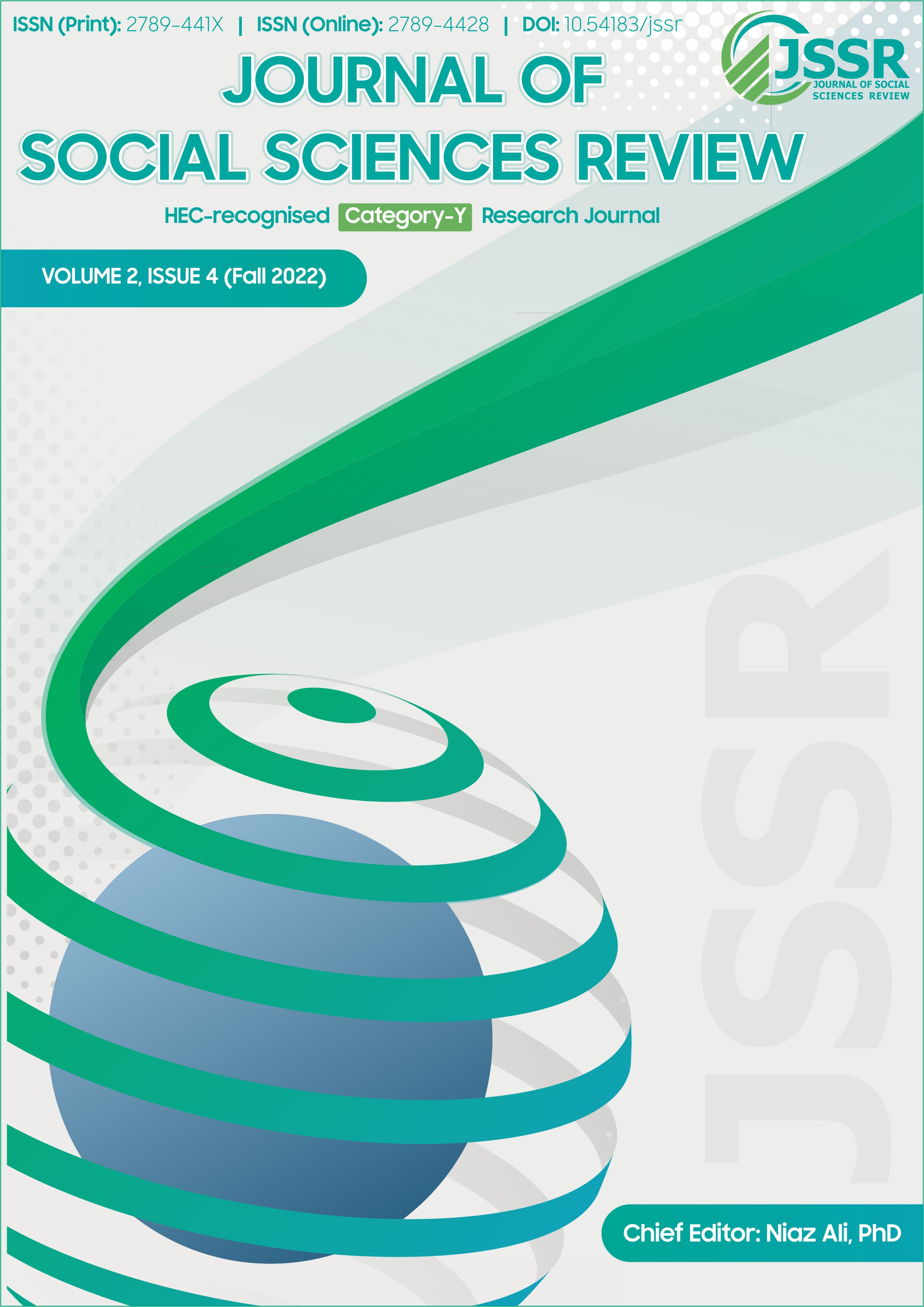Defining Political Ideologies: The Media Representation of Pakistan Tehreek-e-Insaf with Reference to Panama Leaks
DOI:
https://doi.org/10.54183/jssr.v2i4.119Keywords:
Political Ideologies, Media Representation, Pakistan, Pakistan Tehreek e Insaf, Panama LeaksAbstract
The Panama Leaks issue has created a hassle in the whole world, naming individuals, groups and companies. The issue has been equally chanted in the Pakistani Media, both print as well as electronic. Through this issue, individuals having major positions both at an official and national level have been put under fire. The Editorials written by both Daily Dawn and The News represent an insightful analysis and give their expert opinion on the issue. According to McCombs (1972), it is the role of the media to present the interesting aspects of the political parties and to convey the reason for a political campaign to gather public support. Van Dijk (1997) has provided his model for Critical Discourse Analysis in which he has illustrated some of the categories which, according to him, are essential for CDA studies. He is of the view that it often happens that the writer sometimes hides the agent and his identity if the agent is doing something wrong. He has given the concept of self and others. The newspapers framed two major ideologies one was of PTI, and the other was of PML-N. PTI’s ideology was to hold a strong opposition to the case leaving no way out for the Sharifs. On the other hand, Sharif’s announced their resolve to accept the decision of the court amid strong opposition.
References
Gitlin, T. (2003). The Whole World Is Watching: Mass Media in the Making and Unmaking of the New Left. Amsterdam University Press.
McCombs, M. E., & Shaw, D. L. (1972). The Agenda-Setting Function of Mass Media. The Public Opinion Quarterly, 36(2), 176–187. http://www.jstor.org/stable/2747787
Muhammad, C. (2011). The media: setting the political or public agenda. Article published in Today’s Zaman. http://www.todayszaman.com/columnist-231649-the-media-setting-the-political-or-public-agenda.html
Walgrave, Aelst (2006). The Agenda-Setting Role of the Mass Media in the Shaping of Public Opinion. Public Opinion Quarterly.
Saqib, R. (2008). The Relationship between the Public and Print Media Agendas on National Issues in Pakistan. A thesis submitted for Dr. of Philosophy degree in Mass Communication, AIOU, Islamabad.s Shearon AL, Melvin LD (1994).
van Dijk, T. A. (1988). Social cognition, social power and social discourse. Text, 8 (1–2), 129–57.
van Dijk, T. (1990). Social cognition and discourse. In Giles, H. & Robinson, R. P. (Eds.), Handbook of social psychology and language (pp. 163–83). Chichester: Wiley.
van Dijk, T. A. 1991. Racism and the press. London: Rutledge.
van Dijk, T. A. (1992). Discourse and social change. Cambridge: Polity Press.
van Dijk, T. A. (1993a). Principles of critical discourse analysis. Discourse & Society, 4, 249-83.
Van Dijk, T. A. (1993b). Elite discourse and racism. Newbury Park, CA: Sage.
van Dijk, T. A. (1997) . Political discourse and racism: Describing others in Western parliaments’, in S. Riggins (ed.) The Language and Politics of Exclusion: Others in Discourse, pp. 31–65. Thousand Oaks, CA: Sage.
van Dijk, T. A(1998). Ideology: A multidisciplinary approach. London: Sage
van Dijk, T. A. (2000). Critical discourse analysis. Discourses in Society website. Retrieved from http://www.discourses.org/OldArticles/Critical%20discourse%20analysis.pdf
van Dijk, T.A. (2001) "New(s) Racism: A discourse analytical approach." In S.Cottle. (Ed.), Ethnic minorities in the media: Changing cultural boundaries (pp.33-49). Milton Keynes, UK: Open University Press
van Dijk, T.A. (2008). Discourse and power: Contributions to critical discourse studies.Houndsmills: Palgrave MacMillan, 2008
Downloads
Published
Issue
Section
License
Copyright (c) 2022 Copyright in the Journal of Social Sciences Review is retained by the author(s). Authors also grant any third party the right to use the article freely as long as its integrity is maintained and its original authors, citation details and publisher are identified.

This work is licensed under a Creative Commons Attribution-NonCommercial 4.0 International License.
SSR's Editorial Board shares the vision of providing free access to information, education, and science for everyone, thus promoting its content through an OPEN ACCESS POLICY, fulfilling the DOAJ definition of open access. The JSSR adheres to an Open Access and Copyright Licensing Policy based on the belief that making research freely accessible to the public promotes greater global knowledge sharing.
The JSSR uses the Creative Commons Attribution-NonCommercial 4.0 International License. The authors who apply and publish in JSSR consent to abide by the copyright policy set out in the Creative Commons 4.0 license (Attribution-NonCommercial 4.0 International license).
- Copyright in the Journal of Social Sciences Review is retained by the author(s).
- Authors also grant any third party the right to use the article freely as long as its integrity is maintained and its original authors, citation details and publisher are identified.
While "By 'open access' to this literature, we mean its free availability on the public internet, permitting any users to read, download, copy, distribute, print, search, or link to the full texts of these articles, crawl them for indexing, pass them as data to software, or use them for any other lawful purpose, without financial, legal, or technical barriers other than those inseparable from gaining access to the internet itself."



